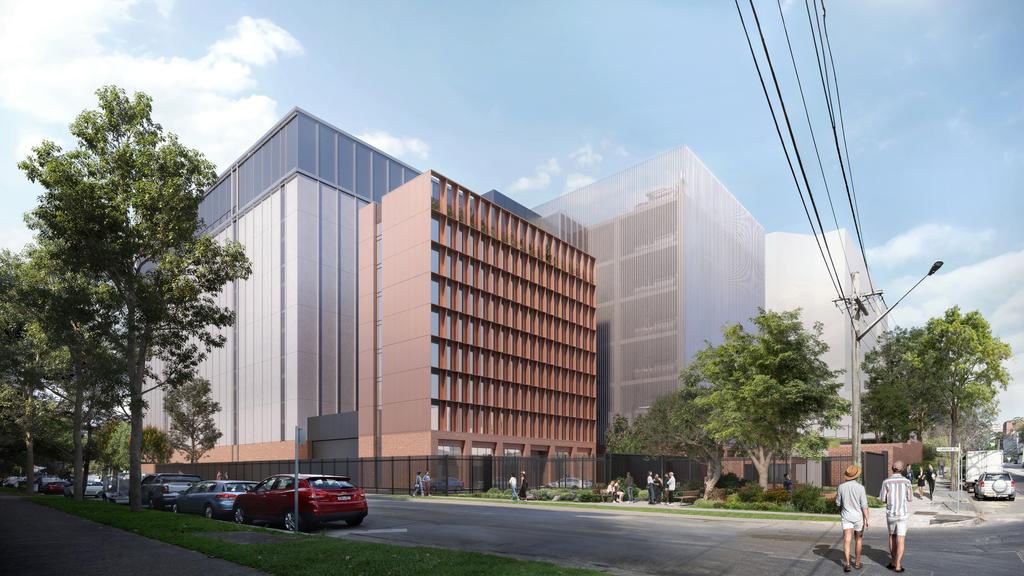Goodman Group CEO slams private equity’s risky data centre plays

Artist’s impression of the Goodman Group’s data centre at Artarmon, Sydney
Billionaire Greg Goodman has called out the tide of high-risk private equity money chasing data centres around the world, saying the leverage required for many of their businesses to operate was at the “extreme end”.
His warning comes amid hype about the huge scale of data centres that global tech giants are commissioning and predictions about the enormous chip processing power that will be required to serve the artificial intelligence revolution.
“There is a lot of leverage piling up in the data centre sector, particularly around the private equity platforms,” Mr Goodman said. “My personal view is: Are they sustainable?”
Mr Goodman, chief executive of listed giant the Goodman Group, said there was going to be a lot of assets sold as the private equity players kept rotating capital. By contrast, the listed group is raising from pension funds for its projects and keeping gearing low.
Mr Goodman was at pains to differentiate the racier practices of some players from the famous low debt model his company has used in the wake of the global financial crisis. Although investors were unnerved – driving the stock down 3.4 per cent to $31.23 – the tycoon said there were now more opportunities for well-capitalised players in both data centres and traditional industrial property.
“We’re seeing a bigger opportunity now than we have for the last two or three years,” he said, adding that many industrial developers had pulled back as funding had become more difficult. In data centres, private equity players are also exposed. “There’s been a fair bit of comment about that in the US … from some of the big US banks,” he said.
The high-risk approach even has drawn the attention of regulators including the Bank of England. By contrast, Mr Goodman said, public companies offered more visibility about their leverage and were well positioned over the next five years. The company remains committed to rolling out the massive new complexes with the backing of global pension funds as it wins commitments from major tech corporations.
He said Goodman was negotiating with hyperscalers who wanted certainty from developers. “We’re making sure we keep everything financially robust in a world where everyone’s looking for high returns,” he said.
Goodman also is raising new data centre funds. “We’re in the process of talking to capital partners in Europe and Australia about additional capital for our program next year around data centre development,” he said.
The Australian efforts are focused on a data centre at Artarmon in Sydney that is soon to kick off, and others are in planning elsewhere in that city and Melbourne. The group also is looking to convert some business parks into apartments but is only up to planning.
The company pointed to its recent move in California’s Silicon Valley, where it has bought a site that will combine data centres and logistics, with more similar deals on the cards in the US. “Over the next 12 months, there’s a lot of opportunities at the moment around industrial and data centres,” Mr Goodman said.
He said logistics customers were looking at consolidating operations at ever-larger sites and using robotics with trends similar to data centres as they wanted large-scale complexes.
“We’re supplying infrastructure for some of the biggest companies in the world,” he said.
Citi analysts said Goodman produced a strong operational update as secured power in its development pipeline upgraded from 2.7GW to 3.4GW and work in progress was running at $12.4bn, which is expected to hit more than $17.5bn by June next year. It is also expected to close capital partnerships in Australia and Europe this financial year.
“In our view, these are key building blocks for sustained compound annual growth into fiscal 2027 and beyond,” Citi said, noting the company stuck to its operational earning per security guidance of 9 per cent, though this was slightly below market consensus expectations.







